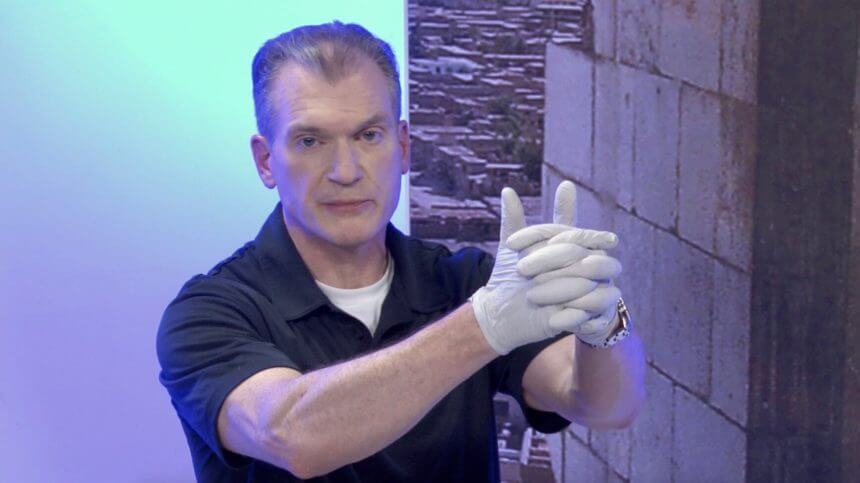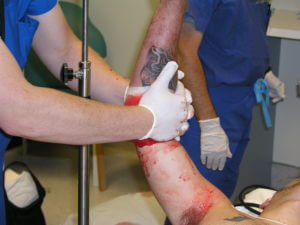
The Value of Direct Pressure in Hemorrhage Control
- Posted by Mike Shertz MD/18D
- Categories (M) Massive Hemorrhage, Improvised
🕖 Reading Time, 3 minutes
In our race to use tourniquets for controlling hemorrhage, we often lose sight of the value of good direct pressure as a hemorrhage control technique.
Proven commercially available tourniquets are almost always going to be better options for controlling significant extremity hemorrhage than direct pressure because tourniquets can be made “hands-free” once secured in place. Additionally, you can carry many more tourniquets than you have hands. However, dedicated medical equipment may not always be available and even when present, takes time to put into action.
A typical blood pressure of 120 mm Hg represents the forward pressure flow of blood through your arterial system. Put in more practical terms, that forward pressure represents about 2.5 pounds per square inch, which is actually very minimal pressure.
Failure to control hemorrhage is rarely related to the amount of pressure required to actually occlude the bleeding blood vessel, but rather getting that minimal pressure to the source of bleeding. This is the challenging point of wound packing, controlling arterial bleeding in junctional areas, and in the thigh: Getting adequate direct pressure to the source of bleeding. To get enough pressure to the point of bleeding often requires much larger pressures on the outside of the body, so by the time the outside pressure dissipates through the overlying soft tissue and muscle, there is still enough pressure deep down to occlude the bleeding vessel.
Tourniquets accomplish this application of pressure well as they are circumferential constricting bands placed around limbs; once the windlass is tightened, tourniquets generate a significant pressure load within the limb they are placed on.
A similar “clamshell” direct pressure technique can be used to fully constrict arterial flow on any limb you can get your hands around. Obviously, smaller limbs are easy to encircle with your hands; unfortunately, thighs are not. Although this technique works very well, it does pin the rescuer in place with the casualty until additional help arrives.
Placing a tourniquet or packing the wound are going to be better medium-term solutions, but fingers-interlaced, white-knuckle-hard clamshell direct pressure right at the point of bleeding is very effective, quickly applied with very little training, and requires no additional equipment.
Here is a photo of the same technique being used in the Emergency Department to completely control a

brachial laceration on a casualty who went into shock after putting his arm through a plate glass window and sustaining massive blood loss. (The brachial laceration was verified during surgery to repair it.) Before this clamshell direct pressure was placed, despite the casualty being hypotensive, blood poured out of his forearm laceration. This casualty was taken care of many years ago, before the advent of commercially available tourniquets.
Check out the Crisis Medicine Facebook page, or the articles archive, including a section with a video of a 13-year using the technique on adult arms with cessation of flow verified with Doppler ultrasound. The short version? Clamshell pressure works and can be implemented even with small hands.
Dr. Mike Shertz is the Owner and Lead Instructor at Crisis Medicine. Dr. Shertz is a dual-boarded Emergency Medicine and EMS physician, having spent over 30 years gaining the experience and insight to create and provide his comprehensive, science-informed, training to better prepare everyday citizens, law enforcement, EMS, and the military to manage casualties and wounded in high-risk environments. Drawing on his prior experience as an Army Special Forces medic (18D), two decades as an armed, embedded tactical medic on a regional SWAT team, and as a Fire Service and EMS medical director.
Using a combination of current and historical events, Dr. Shertz’s lectures include relevant, illustrative photos, as well as hands-on demonstrations to demystify the how, why, when to use each emergency medical procedure you need to become a Force Multiplier for Good.



